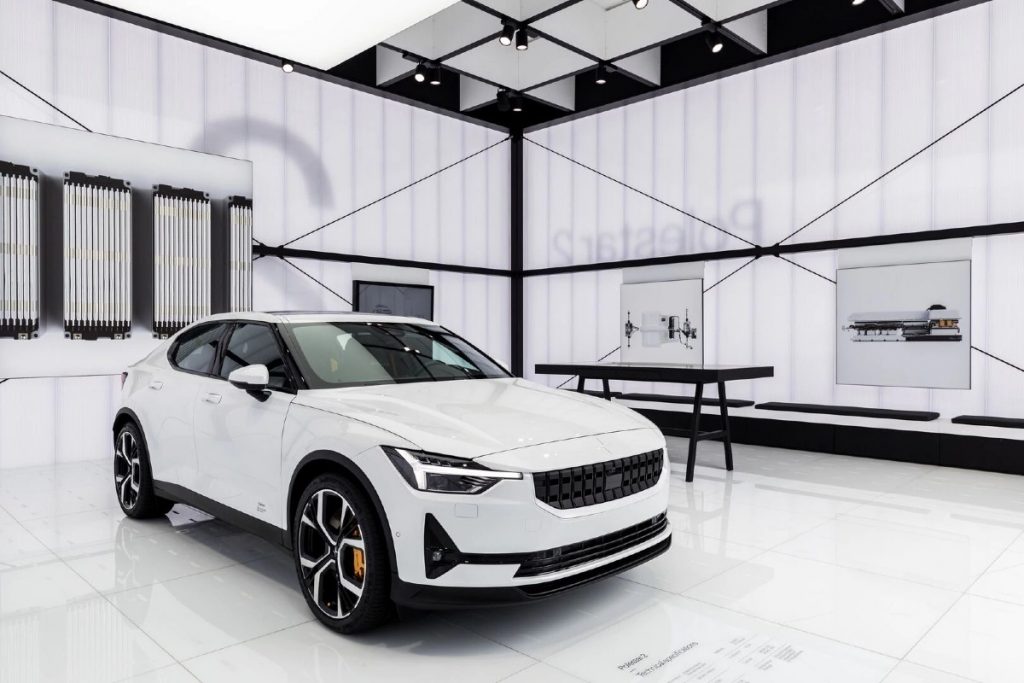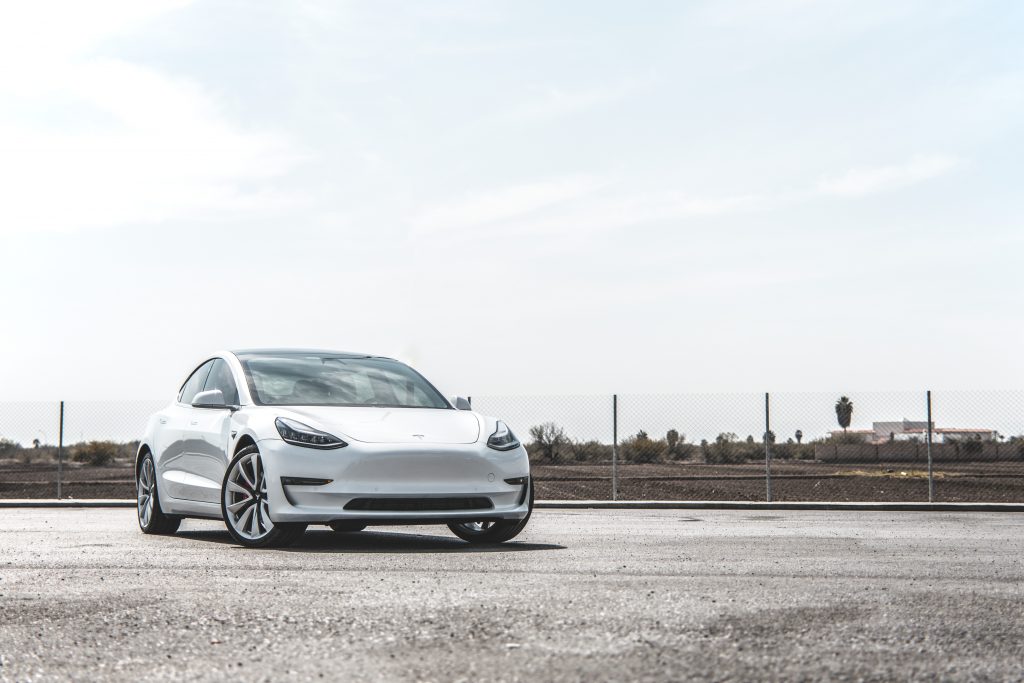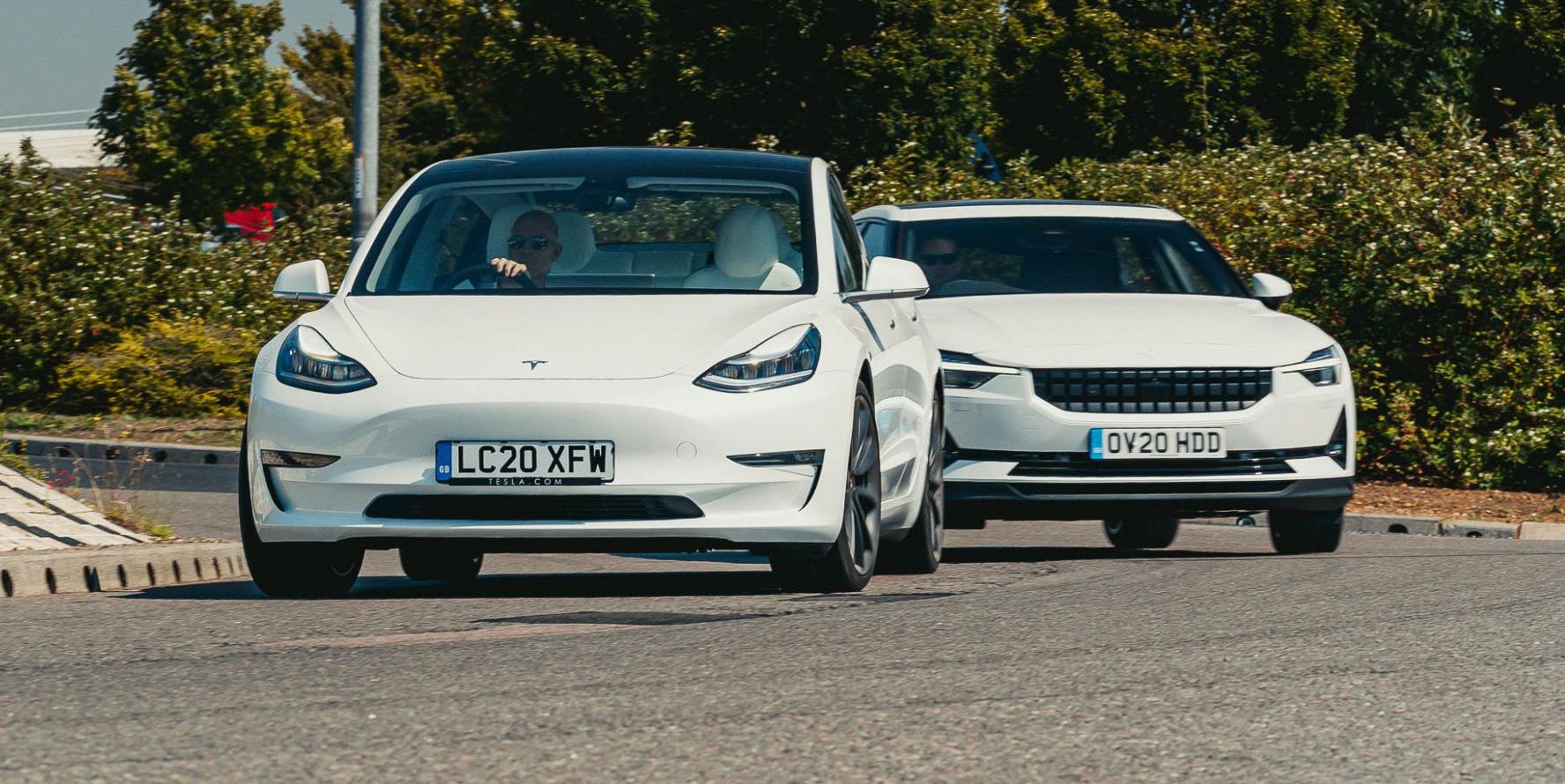The Tesla Model 3 and the Polestar 2 were recently pitted against each other by motoring outlet Top Gear. During the magazine’s review, the two vehicles were compared according to their efficiency, performance, and overall long trip capability, to name a new. As it turns out, it appears that the Polestar 2 is both the Model 3’s current biggest rival and strongest ally.
The Model 3 and the Polestar 2 are comparatively priced, with both vehicles commanding a price of about £600 per month in the UK. The two vehicles are also comparable when it comes to their batteries, with the Model 3 sporting a 75 kWh pack and the Polestar 2 being equipped with a 78 kWh unit. Consumption favors the Tesla during a 500-mile drive, however, as the Model 3 consumed 28.4 kW per 100 miles as opposed to the Polestar 2’s 35.7 kW per 100 miles. Part of this is due to the Polestar 2’s weight, which is about 595 lbs heavier than the Model 3.
That being said, when it comes to raw performance, the Model 3 proved to be far zippier than the Polestar 2, with the Tesla hitting 60 mph in 3.2 seconds and the Polestar 2 taking 4.4 seconds to hit highway speed. Top Gear then mentioned something quite interesting. During their test, they opted to put the Model 3 on Chill Mode for the most part while they were operating the vehicle. But even with Chill Mode, the Model 3 still made the Polestar 2 work hard to keep pace.

“This Tesla is the 450bhp Performance, and it pulled an easy ten lengths on the Polestar off every roundabout or away from each village, but we found ourselves driving it in power-reducing Chill mode most of the time, simply to escape the sudden, neck-straining step-off every time we gently pulled away. It’s very eager. Even in reverse, which is a bit disconcerting. Chill mode smoothed the throttle nicely and still made the Polestar work hard to keep pace,” the publication noted.
One thing that stands out is the fact that unlike the Model 3, which was built as an all-electric vehicle, the Polestar 2 is actually built on Volvo’s CMA architecture, which also underpins the popular XC40. The Polestar 2 is also made with steel panels, which are heavier than the aluminum that’s used in some parts of the Model 3. But despite this, the motoring publication noted that the Polestar, like the Tesla, does not feel heavy on the road at all, thanks to its low center of gravity.
Top Gear did state that there are some areas where the Model 3 falls beneath the Polestar 2. One of these is the vehicles’ interior quality, which is an area where Polestar excels in. Another concerns the two vehicles’ driving dynamics. The publication noted that the softer sprung Tesla gets a bit jiggled from side to side and it does not have impressive body control. The Model 3’s steering was also described as “pretty nasty,” as it has an initial resistance that fades as the driver turns.

The publication noted that the Model 3’s steering could not be described as “sporty or involving,” just effective. On the other hand, the Polestar 2’s steering and controls were described as reassuring in the way that they are “meatier and more satisfying.” But despite these drawbacks, the Model 3 still rides more comfortably compared to the Polestar 2.
The two vehicles also compare very well when it comes to their tech, as the Polestar 2’s Google-powered software experience stands pretty well against Tesla’s custom OS for the Model 3. Both vehicles have robust driver-assist features as well, though Top Gear noted that both Tesla and Volvo’s autonomous efforts still have large areas for improvement. This is especially true for Tesla, which sells a Full Self-Driving suite for the Model 3. Both cars are capable of long-distance travel, thanks to the Supercharger Network and Polestar’s partnership with Plugsurfing. But between the two, the Model 3 provides a faster, easier charging experience.
Ultimately, the Polestar 2 is a stellar effort on Volvo’s part. It’s attractive, well-built, and it carries the best of Volvo’s tech and features in an all-electric package. That being said, Top Gear concluded that ultimately, the Model 3 would likely still be the vehicle to choose if one were looking for an electric car, simply because it provides a more complete ecosystem of ownership.
“The Polestar experience is still very Volvo – and there’s nothing wrong with that. No Volvo drives as well as this, nor oozes more Scandi calmness and cool. It’s pure hygge. I know this is less than analytical but I love what it stands for, what it looks like, it’s the one I’d rather be seen driving and yet… the Tesla wins. Given a straight choice between the two, that’s the one I’d drive away. Nothing to do with its speed or autonomy – the two things usually championed by the Teslarati – but because of its ease of use, efficiency, the supercharger network. It’s the more complete mode of transport,” the magazine noted.
Elon Musk
Tesla reveals it is using AI to make factories more sustainable: here’s how
Tesla is using AI in its Gigafactory Nevada factory to improve HVAC efficiency.

Tesla has revealed in its Extended Impact Report for 2024 that it is using Artificial Intelligence (AI) to enable its factories to be more sustainable. One example it used was its achievement of managing “the majority of the HVAC infrastructure at Gigafactory Nevada is now AI-controlled” last year.
In a commitment to becoming more efficient and making its production as eco-friendly as possible, Tesla has been working for years to find solutions to reduce energy consumption in its factories.
For example, in 2023, Tesla implemented optimization controls in the plastics and paint shops located at Gigafactory Texas, which increased the efficiency of natural gas consumption. Tesla plans to phase out natural gas use across its factories eventually, but for now, it prioritizes work to reduce emissions from that energy source specifically.
It also uses Hygrometric Control Logic for Air Handling Units at Giafactory Berlin, resulting in 17,000 MWh in energy savings each year. At Gigafactory Nevada, Tesla saves 9.5 GWh of energy through the use of N-Methylpyrrolidone refineries when extracting critical raw material.
Perhaps the most interesting way Tesla is conserving energy is through the use of AI at Gigafactory Nevada, as it describes its use of AI to reduce energy demand:
“In 2023, AI Control for HVAC was expanded from Nevada and Texas to now include our Berlin-Brandenburg and Fremont factories. AI Control policy enables HVAC systems within each factory to work together to process sensor data, model factory dynamics, and apply control actions that safely minimize the energy required to support production. In 2024, this system achieved two milestones: the majority of HVAC infrastructure at Gigafactory Nevada is now AI-controlled, reducing fan and thermal energy demand; and the AI algorithm was extended to manage entire chiller plants, creating a closed-loop control system that optimizes both chilled water consumption and the energy required for its generation, all while maintaining factory conditions.”
Tesla utilizes AI Control “primarily on systems that heat or cool critical factory production spaces and equipment.” AI Control communicates with the preexisting standard control logic of each system, and any issues can be resolved by quickly reverting back to standard control. There were none in 2024.
Tesla says that it is utilizing AI to drive impact at its factories, and it has proven to be a valuable tool in reducing energy consumption at one of its facilities.
Elon Musk
Tesla analysts believe Musk and Trump feud will pass
Tesla CEO Elon Musk and U.S. President Donald Trump’s feud shall pass, several bulls say.

Tesla analysts are breaking down the current feud between CEO Elon Musk and U.S. President Donald Trump, as the two continue to disagree on the “Big Beautiful Bill” and its impact on the country’s national debt.
Musk, who headed the Department of Government Efficiency (DOGE) under the Trump Administration, left his post in May. Soon thereafter, he and President Trump entered a very public and verbal disagreement, where things turned sour. They reconciled to an extent, and things seemed to be in the past.
However, the second disagreement between the two started on Monday, as Musk continued to push back on the “Big Beautiful Bill” that the Trump administration is attempting to sign into law. It would, by Musk’s estimation, increase spending and reverse the work DOGE did to trim the deficit.
Every member of Congress who campaigned on reducing government spending and then immediately voted for the biggest debt increase in history should hang their head in shame!
And they will lose their primary next year if it is the last thing I do on this Earth.
— Elon Musk (@elonmusk) June 30, 2025
President Trump has hinted that DOGE could be “the monster” that “eats Elon,” threatening to end the subsidies that SpaceX and Tesla receive. Musk has not been opposed to ending government subsidies for companies, including his own, as long as they are all abolished.
How Tesla could benefit from the ‘Big Beautiful Bill’ that axes EV subsidies
Despite this contentious back-and-forth between the two, analysts are sharing their opinions now, and a few of the more bullish Tesla observers are convinced that this feud will pass, Trump and Musk will resolve their differences as they have before, and things will return to normal.
ARK Invest’s Cathie Wood said this morning that the feud between Musk and Trump is another example of “this too shall pass:”
BREAKING: CATHIE WOOD SAYS — ELON AND TRUMP FEUD “WILL PASS” 👀 $TSLA
She remains bullish ! pic.twitter.com/w5rW2gfCkx
— TheSonOfWalkley (@TheSonOfWalkley) July 1, 2025
Additionally, Wedbush’s Dan Ives, in a note to investors this morning, said that the situation “will settle:”
“We believe this situation will settle and at the end of the day Musk needs Trump and Trump needs Musk given the AI Arms Race going on between the US and China. The jabs between Musk and Trump will continue as the Budget rolls through Congress but Tesla investors want Musk to focus on driving Tesla and stop this political angle…which has turned into a life of its own in a roller coaster ride since the November elections.”
Tesla shares are down about 5 percent at 3:10 p.m. on the East Coast.
Elon Musk
Tesla scrambles after Musk sidekick exit, CEO takes over sales
Tesla CEO Elon Musk is reportedly overseeing sales in North America and Europe, Bloomberg reports.

Tesla scrambled its executives around following the exit of CEO Elon Musk’s sidekick last week, Omead Afshar. Afshar was relieved of his duties as Head of Sales for both North America and Europe.
Bloomberg is reporting that Musk is now overseeing both regions for sales, according to sources familiar with the matter. Afshar left the company last week, likely due to slow sales in both markets, ending a seven-year term with the electric automaker.
Tesla’s Omead Afshar, known as Elon Musk’s right-hand man, leaves company: reports
Afshar was promoted to the role late last year as Musk was becoming more involved in the road to the White House with President Donald Trump.
Afshar, whose LinkedIn account stated he was working within the “Office of the CEO,” was known as Musk’s right-hand man for years.
Additionally, Tom Zhu, currently the Senior Vice President of Automotive at Tesla, will oversee sales in Asia, according to the report.
It is a scramble by Tesla to get the company’s proven executives over the pain points the automaker has found halfway through the year. Sales are looking to be close to the 1.8 million vehicles the company delivered in both of the past two years.
Tesla is pivoting to pay more attention to the struggling automotive sales that it has felt over the past six months. Although it is still performing well and is the best-selling EV maker by a long way, it is struggling to find growth despite redesigning its vehicles and launching new tech and improvements within them.
The company is also looking to focus more on its deployment of autonomous tech, especially as it recently launched its Robotaxi platform in Austin just over a week ago.
However, while this is the long-term catalyst for Tesla, sales still need some work, and it appears the company’s strategy is to put its biggest guns on its biggest problems.
-

 Elon Musk1 day ago
Elon Musk1 day agoTesla investors will be shocked by Jim Cramer’s latest assessment
-

 News6 days ago
News6 days agoTesla Robotaxi’s biggest challenge seems to be this one thing
-

 News2 weeks ago
News2 weeks agoTesla’s Grok integration will be more realistic with this cool feature
-

 Elon Musk2 weeks ago
Elon Musk2 weeks agoElon Musk slams Bloomberg’s shocking xAI cash burn claims
-

 News2 weeks ago
News2 weeks agoTesla China roars back with highest vehicle registrations this Q2 so far
-

 News2 weeks ago
News2 weeks agoTexas lawmakers urge Tesla to delay Austin robotaxi launch to September
-

 News2 weeks ago
News2 weeks agoTesla dominates Cars.com’s Made in America Index with clean sweep
-

 Elon Musk1 week ago
Elon Musk1 week agoFirst Look at Tesla’s Robotaxi App: features, design, and more
















